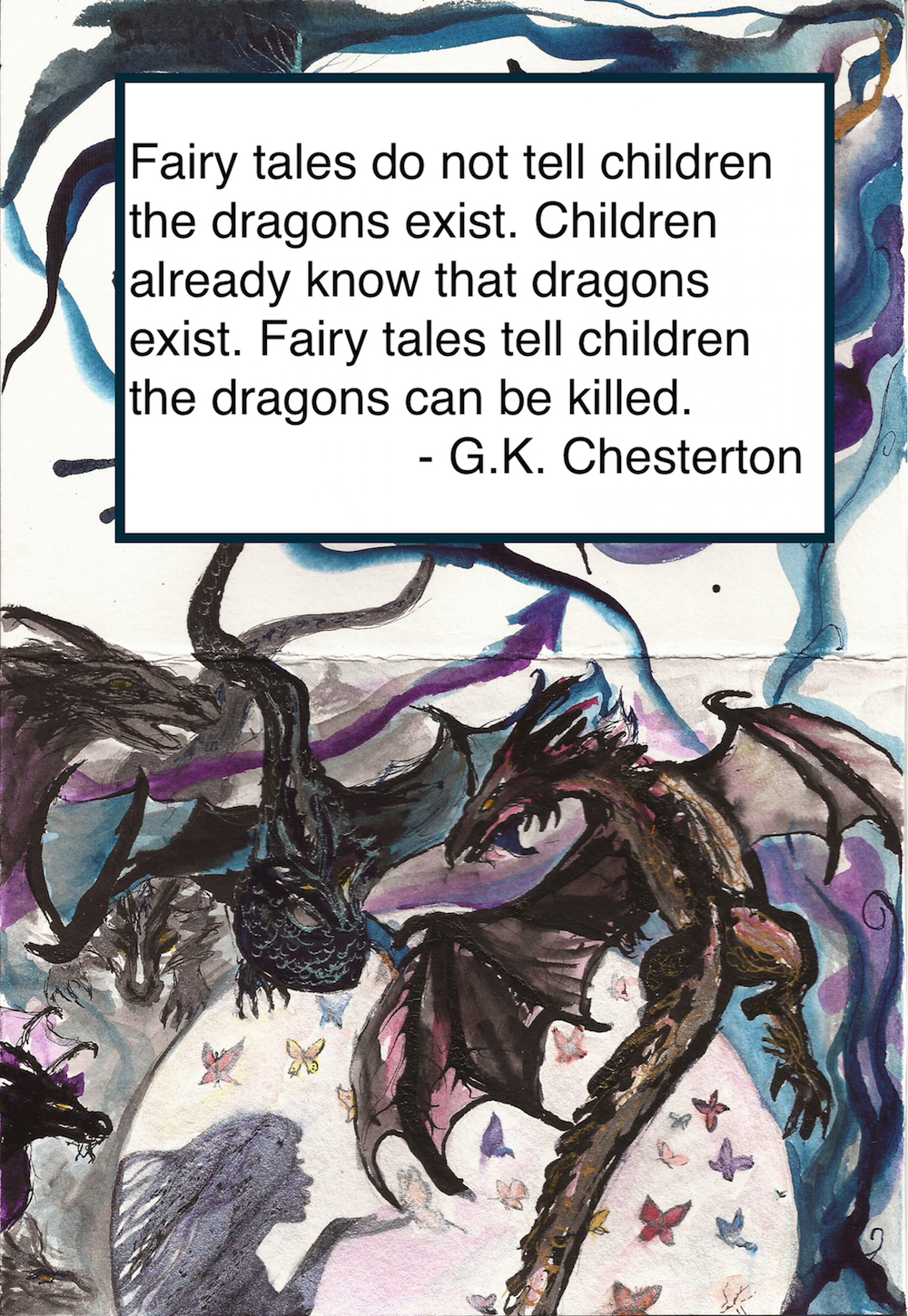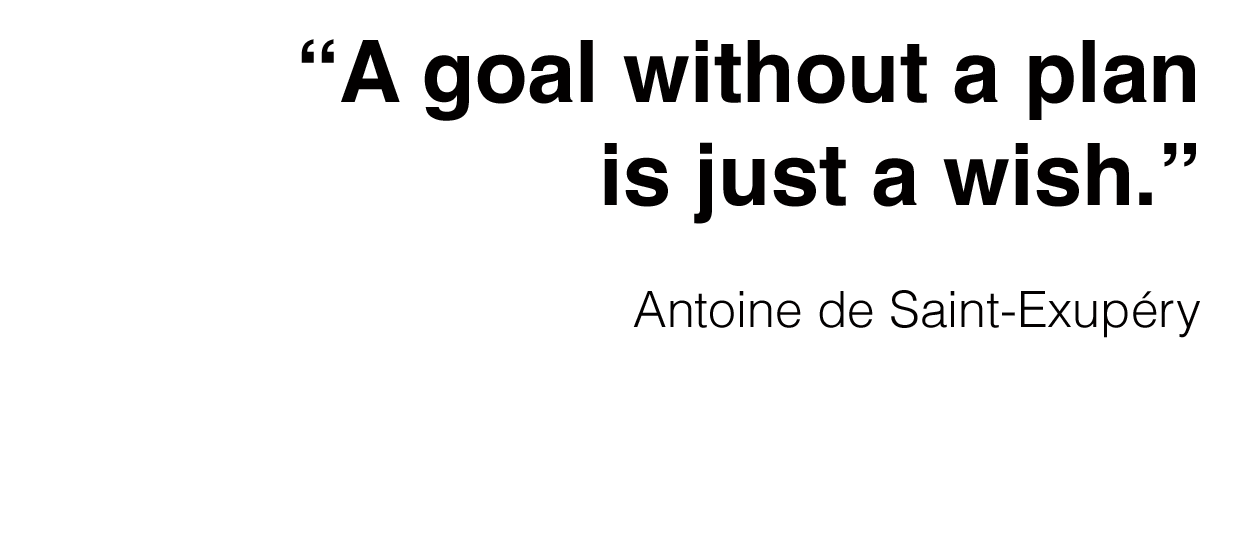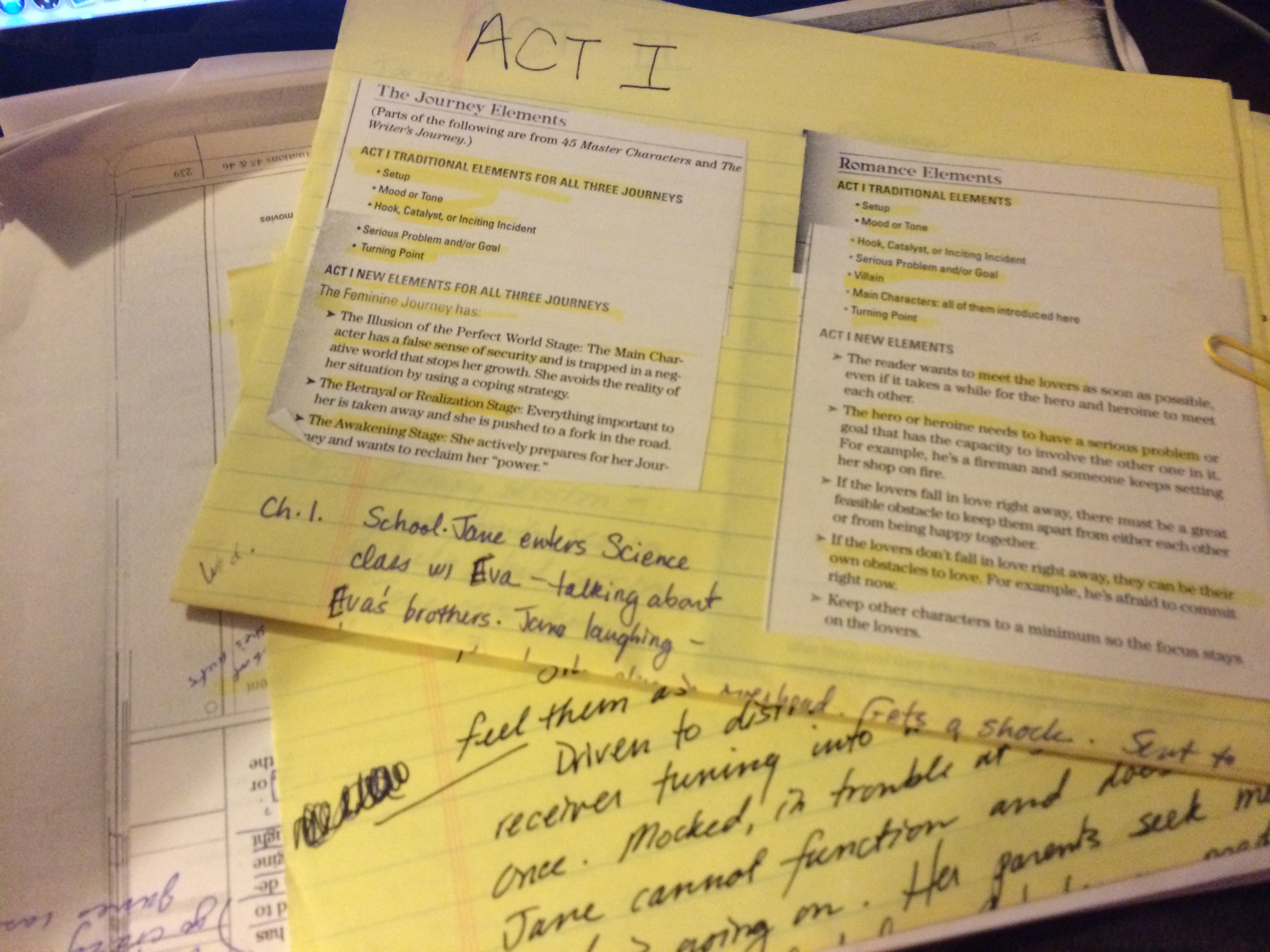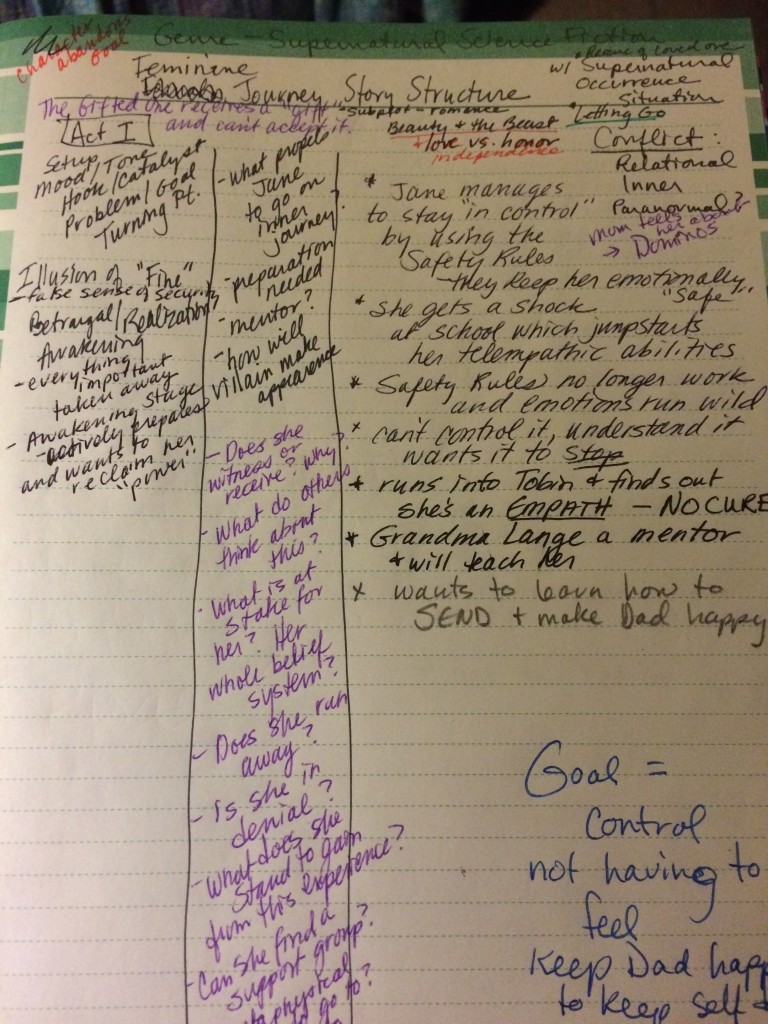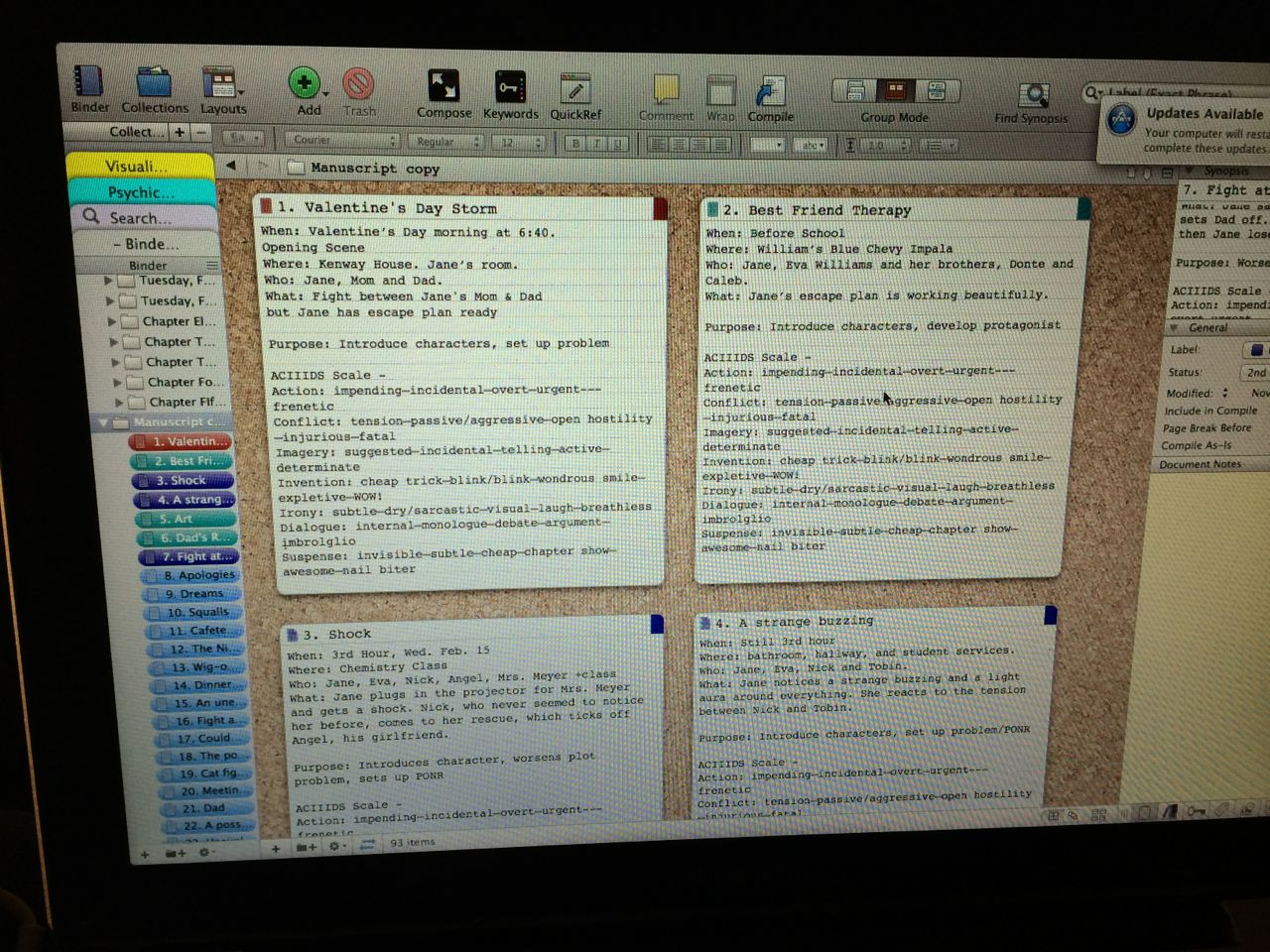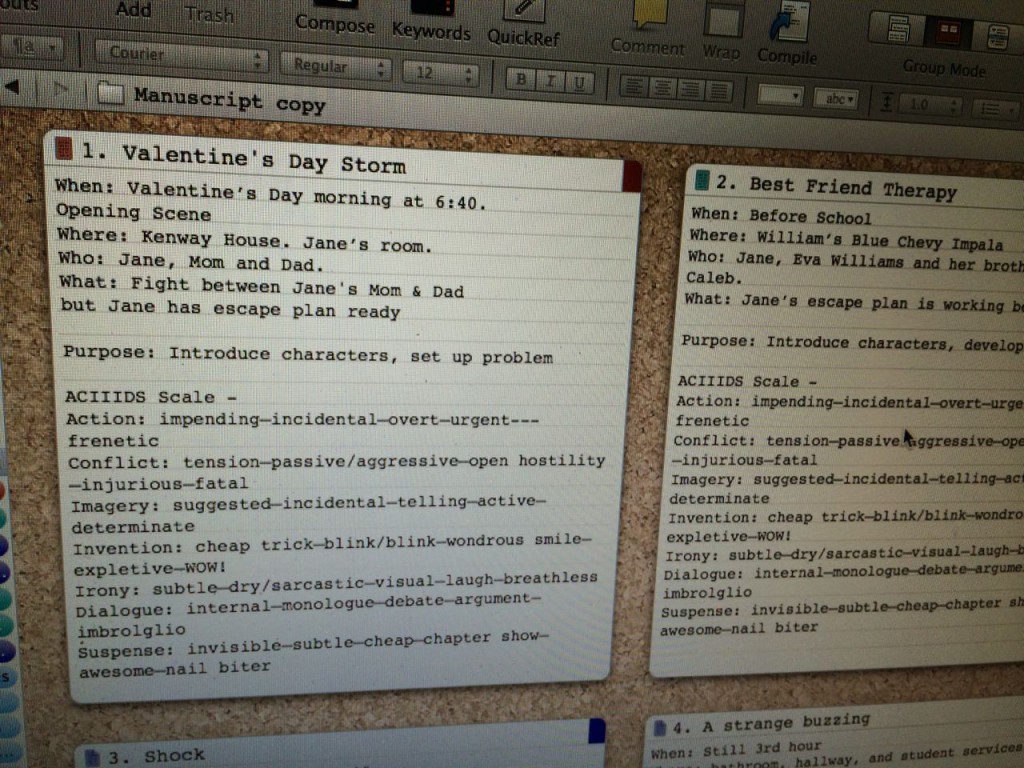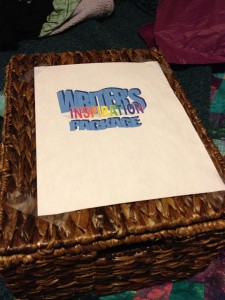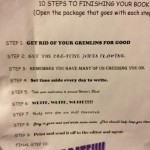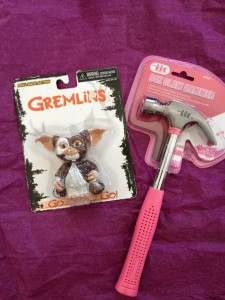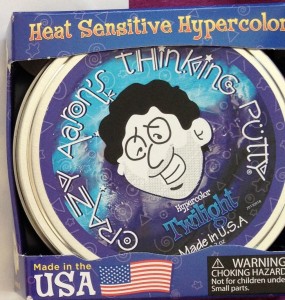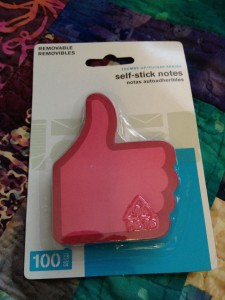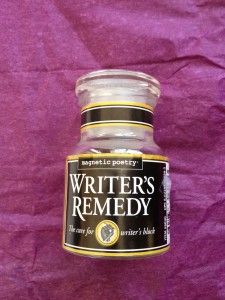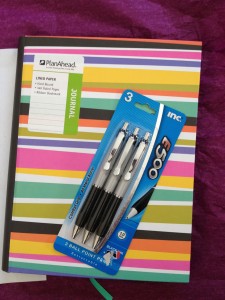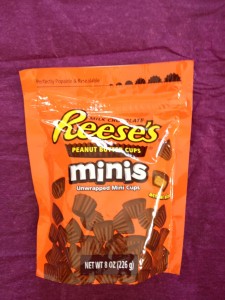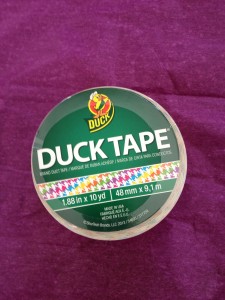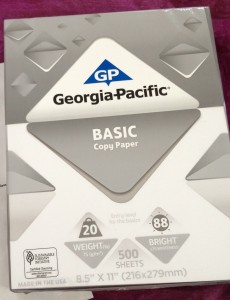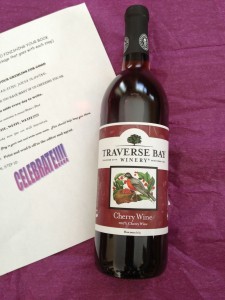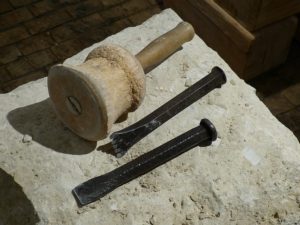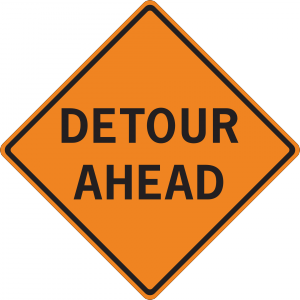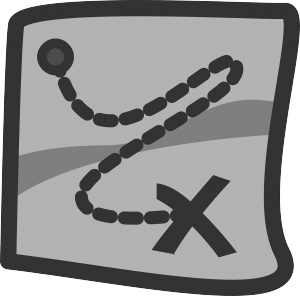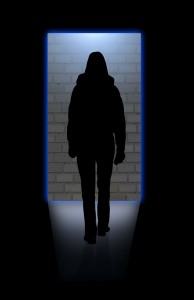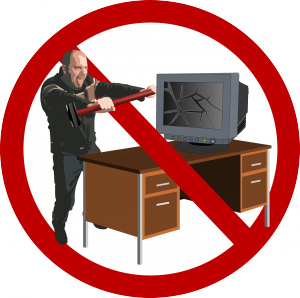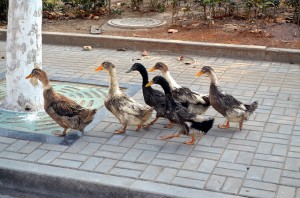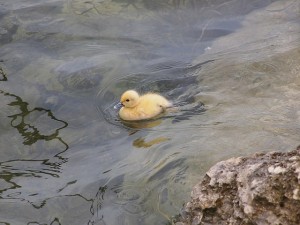I painted the card for my niece and then found the quote in the front of the book The Story of Owen, Dragon Slayer of Trondheim, by E.K. Johnston. I loved the book — the world building and characters are unique. You should definitely get it from your library or nearest bookstore and read it. The sequel, Prairie Fire, came out and is on my pile of books to read. Can’t wait!
Author Archives: Sarah McElrath
Plot Revisions
Wouldn’t it be nice if there were an app for revisioning plot? Like a map app or something. I could certainly use it right about now, when I’ve been away from my novel for too long (Oh how I’ve missed you, dear Work In Progress!)
Sadly, as far as I know, there isn’t such an app (If you know of one, please share!). However, I bought a couple of books that have helped me to create my own map–albeit, not nearly as fancy as the one pictured. My plot map looks more like scribbles on paper, but whenever I start to get lost, I can refer back to it. plan, a map or sorts, to show me where I am headed. I suppose there are those who map everything out from the beginning, but I didn’t know enough about this world to be able to do that in the first draft. However, in the 3rd…4th? draft, I’m glad to have something to look at when I’ve been away from the novel for any length of time (as I have of late).
So the books that have helped me map my plot are Story Structure Architect and The Writer’s Little Helper. 
Both of these books have some great tips on how to set up the structure of your story. I relied on the Writer’s Little Helper to get me started and then used Story Structure Architect to flesh out my plot and sub-plots.
Here is a picture of what my plot map looks like (messy handwriting and all):
Stay Tuned for more info about how to develop (or revise) plot.
Happy writing!
Re-visioning for PLOT
Right now I’m in the middle of trying to re-vision the plot of my 3rd novel, I Feel For You
(IFFY). I’m using Scrivener – and really loving the corkboard part of it for visualizing. One thing I’ve been working on is adding information based on the book The Writer’s Little Helper (by James V. Smith) to the summary (what shows up on the corkboard).
I’m adding all the information on “The Scene Card” (page 114 of the 2006 ed.) So each summary tells:
- who is in the scene,
- what happens,
- where and when it takes place
- whether it is a master, major, or minor scene (as described in The Writer’s Little Helper, 42-43),
- what the purpose of the scene is,
- and finally the ratings on the ACIIDS intensity scale (pg.
This is what it looks like:
How to inspire a writer
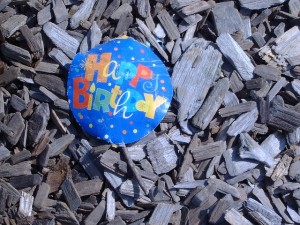 I recently celebrated my birthday. Now, in general, I don’t go much for big celebrations. This isn’t because getting older bothers me — I find the alternative is not so good. Really, it’s because I’m lazy. With my daughter’s birthday and Valentine’s Day both happening shortly before my birthday, I’m partied out. Enough work. I just don’t want to cook. That’s all. So we play it low-key.
I recently celebrated my birthday. Now, in general, I don’t go much for big celebrations. This isn’t because getting older bothers me — I find the alternative is not so good. Really, it’s because I’m lazy. With my daughter’s birthday and Valentine’s Day both happening shortly before my birthday, I’m partied out. Enough work. I just don’t want to cook. That’s all. So we play it low-key.
But this year, my friend came up with an awesome gift that I have to share with all you writer types — or those who have writers in your life. Because it is SO cool. My friend gave
me a Writer’s Inspiration Package. A very heavy basket, which, when I opened it, proved to be filled with all sorts of goodies –all wrapped of course, so I couldn’t guess what they were ahead of time. “You have to open them in order,” she instructed me. On the top was a sheet of paper, 10 Steps To Finishing Your Book. Each package was numbered to go with one of the steps.
Here are the 10 Steps To Finishing Your Book — along with corresponding gifts.
1. Get Rid Of Your Gremlins For Good.
Whew! Does she know me or what?! Gremlins are those voices in your head telling you that your writing sucks, and why are you doing this anyway? Somehow, no matter what I do, they creep back in and get noisy every time I write. But now, they’d better watch out because I’m getting rid of them. For Good. I’ve got a pink hammer (so my husband doesn’t take it) and I’m not afraid to use it.
2. Get The Creative Juices Flowing.
I don’t always have the chance to write every day, so when I do sit down to write, I have to prime the pump a bit. Music helps — I create playlists to go along with each novel, so my brain associates that music with the contents and emotions of that particular novel. But now I have another way to get thinking. Sometimes keeping my hands busy with a simple task (I know someone who draws spirals) frees up my brain to think, create. Showers work really well too.
3. Remember You Have Many Of Us Cheering You On.
It helps to let people know you are
writing. It holds you accountable. It makes you embarrassed if they ask how the writing is going and you have to admit that you haven’t been writing — so that helps you to sit your butt in the chair and write. I love it when I know people are waiting to read what I’ve written. Inspires me to write even when I don’t feel like it. Nothing like a deadline to make me productive!
4. Set Time Aside Every Day To Write.
This can be hard. But even if you only have ten
minutes, it adds up. The more consistent you can be, the less “getting into it” time you will need when you do sit down to write. It’s like how when you get used to waking up at a certain time for school each day, you often wake up at that time on the weekend too. Same thing with writing every day. If you do it on a regular basis, your brain starts to expect it. You might even find you miss it when you don’t sit down to write.
5. Take Your Medication To Prevent Writer’s Block.
Of course, if you write every day, you might find that writer’s block doesn’t exist. And it does depend on what you mean by writer’s block. Maybe you mean you don’t FEEL like writing — write anyway and you often find that you do feel like it. Maybe it means you don’t have any idea what to write about. That’s where using a prompt can come in handy. (Check out the list of writing prompts on the links page) Or just set a timer and write whatever comes into your head. That’s the idea behind Julia Cameron’s Morning Pages.
6. Write, Write, Write!!!
Doesn’t get any clearer than that. Butt in chair. One letter, one word at a time. Write. On paper, on the computer… whatever works for you. When I get stuck in my novel, I’ll switch to journaling and it often helps free things up again. But nothing gets on the page unless I sit down and take the time to WRITE.
7. Make Sure You Are Well Nourished.
Usually this isn’t a problem for me. Although I have been known
to get so caught up in the writing that I forget to eat. (That doesn’t happen often.) Chocolate and Peanut Butter — what’s not to like? Even has protein. Of course, my number one writing candy is… SKITTLES. It’s something about being able to arrange them by color… Not that I’m ocd or anything… : )
8. Stay In Your Seat And Write Some More. This Should Help Keep You There.
Yup, it always comes back to sitting your butt down and writing. Duct tape = love. And now it comes in all sorts of awesome colors and patterns so you can be stuck in your seat but still coordinate.
9. Print and send it off to the editor and agent.
At some point, you need an audience. Join a
writing group, blog, send your awesome story/poem/novel off to a contest. Query an editor or agent… Get it out there. It’s scary, but the writing process isn’t complete until you have a reader. Otherwise you could just keep it all in your head — that would be a lot easier. But not nearly as rewarding as connecting with someone using your written words.
And finally, take time to celebrate. Finish a rough draft? Great job! Celebrate. Got through a first edit? That took some hard work. Celebrate. Shared your poem with an audience? Super! You are brave and you should celebrate. Recognize that even though writing itself is a rather solitary occupation, you can have a community to support you, encourage you, and celebrate with you. And for those of you who know a writer — this Writer’s Inspiration Package is a great way to help.
Thanks Betty Jo. You Rock!
Where words and visuals meet
 When you write, do you see pictures in your head? Video? I remember one of my co-workers and a writer friend of mine, Mary Zitta, talking about how when she wrote, it was like a video playing in her head. She’d have her eyes closed, fingers dancing on the keyboard just trying to keep up.
When you write, do you see pictures in your head? Video? I remember one of my co-workers and a writer friend of mine, Mary Zitta, talking about how when she wrote, it was like a video playing in her head. She’d have her eyes closed, fingers dancing on the keyboard just trying to keep up.
That never happens to me. In fact, for the longest time I thought it meant I wasn’t really a writer. Most of the time when I write it is
like chipping away at stone. I know there’s something in there–although I’m not always sure even what it is. It is a matter of chipping away rock to reveal the story, the poem, the essay underneath. It’s hard work, not very exciting–and definitely labor intensive.
Of course, the longer I’ve been in the business of writing, the more I realize there many different ways to  write. Heather Sellers believes in writing slow — as in dipped-pen-in-ink slow. Some writers believe in writing fast — no revision until the whole thing is done (think NANOWRIMO). Some authors outline, some don’t. So while I no longer feel like my chipping-away-stone style of writing is wrong, I’m always searching
write. Heather Sellers believes in writing slow — as in dipped-pen-in-ink slow. Some writers believe in writing fast — no revision until the whole thing is done (think NANOWRIMO). Some authors outline, some don’t. So while I no longer feel like my chipping-away-stone style of writing is wrong, I’m always searching
to make it better. Faster would be nice too.
It took me some time to realize I DO visualize things. It just doesn’t tend to happen AS I write. Sometimes I get a picture in my head and then paint, draw, or WRITE to describe that visual in my mind’s eye.
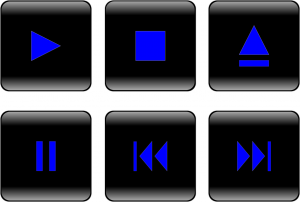 Sometimes the visual follows the words–like in foreign movies where the dubbing is off sync and the actor’s mouth moves after the words have been spoken. Even then it is a matter of rewinding and playing again as I try to get the visual right. So maybe for me, the visual comes more in the revision stage. In looking at the words on the page, and deliberately “seeing” the picture they create in my head. Does the picture match the scene, the emotions? If not, I revise. If so, I move on.
Sometimes the visual follows the words–like in foreign movies where the dubbing is off sync and the actor’s mouth moves after the words have been spoken. Even then it is a matter of rewinding and playing again as I try to get the visual right. So maybe for me, the visual comes more in the revision stage. In looking at the words on the page, and deliberately “seeing” the picture they create in my head. Does the picture match the scene, the emotions? If not, I revise. If so, I move on.
Since I have started dabbling in painting and drawing, I’ve found I can play up the visual to enhance the writing — and vice versa.
1. Sketch or storyboard a scene BEFORE you write it. (There are many different storyboarding tools. I’ve linked to Storyboard That which is a free tool.)
2. Pick some music fits the content or mood of what you are writing. Close your eyes and listen to it BEFORE you write. Pay attention to what images form in your head. When you write, play the music again. I create playlists for my novels–music or lyrics that fit with the plot and /or emotion of the piece. Not only do they help me sink into the writing stage, but also they help create images in my head as well as make me feel the emotion of the piece. (This makes sense if you think about it. Music soundtracks add to the tension/joy/sadness… of a movie.)
3. After you have written a scene, videotape yourself acting it out. Granted, 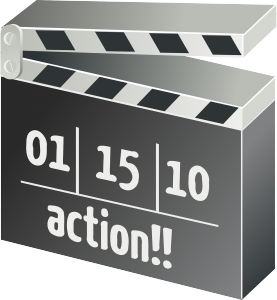 depending on the scene, you might want to make sure no one is around before you start. Acting it out helps not only with the movement in a scene (sometimes I find I’ve written something that just isn’t physically possible), but also with dialog. You’ll hear when the dialog isn’t working. Trust me. **Even if you don’t videotape it, it’s still worth acting it out.
depending on the scene, you might want to make sure no one is around before you start. Acting it out helps not only with the movement in a scene (sometimes I find I’ve written something that just isn’t physically possible), but also with dialog. You’ll hear when the dialog isn’t working. Trust me. **Even if you don’t videotape it, it’s still worth acting it out.
4. Draw your characters — or find them in magazines or real life. Does the picture you are looking at match the person you described?
5. Sketch/Storyboard the scene AFTER you have written it. You wrote it, can you “see” it enough to storyboard it?
6. When stuck for words, look for images. When stuck for a visual, play with words.
How about you? What is your style of writing–and what do you do to “enhance” it?
A small example from my writing practice: (keep in mind that I do not consider myself a poet. However, sometimes content choses form. But that’s another post.)
So, there’s a poem I’ve been monkeying with–not that I knew it was a poem when I started. It started with a visual–that of a loved one dying.
I spent the last few weeks in August helping give hospice care to my mother-in-law. Strange, sad, difficult, and wonderful days. Some of the hardest moments in my life–but something I was so blessed to be able to do. The stillness in her face held such a sense of… timelessness and urgency, waiting and great activity, all at the same time. The papery white cheeks, the breath–shallow and rapid–moving the ribcage up and down.
Those days stayed with me, and I needed to write about them–so I started with the visual of those last days.
wilted
wings limp, damp
heart beats
hummingbird fast
The word “wings” brought me another visual — that of a chrysalis. So I chipped away at that image.
moth pale skin
the minutes, days, years
wrap around
cocoon you waiting
for transformation
Looking at the words on the page, I kept seeing the chrysalis part of things, but not the becoming a butterfly part–not the transformation, beginning part. And when I was in that room, the warm golden light of the sun streaming in the window, Frank Sinatra crooning in the background — I had the sense of beginnings as well as endings.
Two weeks cocooned
now come and gone
and still breath
rises and falls
in its ribbed cage
eyes under thumbprint lids
move back and forth
seeing joys and sorrows
in the caterpillar past?
or dreaming of a winged future
soaring into the light
away from this inching physical form
How much longer
before full transformation?
released from this shell
spread your wings
and fly home
I’m not convinced it is there yet, but by going back and forth between the words and the visuals, I think it is getting closer to what I wanted it to express. Next, I want to paint it. Stay tuned!
To Title Or Not To Title–That Is The Question.
The Problem…
I’m in the great mists of revision and I’m wondering about whether to title my chapters or not.
I realize this is, to a large degree, a matter of choice. Still, there must be benefits and drawbacks. If I go to my middle school library shelves, I can find examples of both. The Percy Jackson books by Rick Riordan have chapter titles that definitely added to the reading experience. My daughters and I laughed over many of them. Lish McBride’s books, Hold me closer, Necromancer and Necromancing the Stone also have chapter titles. All of hers are titles or phrases from old songs–mostly from my era so I loved them. Don’t know that my students get the connection, but my daughter still found them amusing, so I would still call that a plus.
Research Says…
Of course, being a librarian, I always believe I should research an issue, see what others have to say about it. So I did a search on Google (of course), and it pulled up a link to the Gotham Writers’ Workshop, which is a great site for getting professional information about writing. It gave some great examples (and not YA examples) of how writers have titles chapters. And it ended with this:
So while titles are certainly not necessary—many novels don’t have them—they have the potential to create unity or add another layer to the reading experience. If you use them, make sure they’re contributing in a meaningful way. The reader will be looking for associations.
At least this gave me something to base my decision on. Could I title my chapters in such a way that they add to the reading experience? If not, then I probably shouldn’t title them — after all, I found many websites listed on google where writers talked about how they hated chapter titles that “gave things away.”
way that they add to the reading experience? If not, then I probably shouldn’t title them — after all, I found many websites listed on google where writers talked about how they hated chapter titles that “gave things away.”
Furthermore…
Not yet sure about what I wanted to do, I picked up Francine Prose’s book Reading Like a Writer. When I skimmed the Table of Contents (yup, she titled her chapters–but it is a non-fiction book which does make a difference), I found a chapter called Details. It starts off by telling of a story the author had been told about a class where writers learned to tell their true life stories more effectively. The first volunteer tells the story of how she lost a leg to a bout of childhood cancer, but went on to become a world-class skier. The second volunteer waited until the room was silent and then pronounced, “in a sort of growl, a graphic term for a sex act that, he said, he liked to do with his wife.” His story was so well told, that even though it was pornographic and downright aggressive, the audience hardly even breathed. On the third day of class, the one-legged woman asked if she could tell another story. She said it was a story she’d never told anyone other than her therapist. With that, she proceeded to tell the class how she’d lied about how she lost her leg. It was because she’d gotten bit by a cat and the wound had turned gangrenous. The woman told it with unwavering conviction and there wasn’t one person in the room who didn’t believe every word–the details about the father who was a passionate carnivore and the mother who was a strict vegetarian, how the dad said the smell of the infected wound smelled like the mom’s tofu.
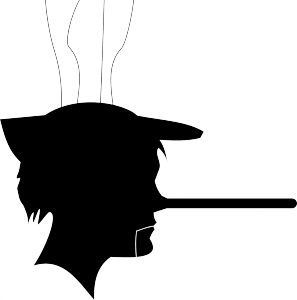 Finally the one-legged woman got to the end of her story. She waited a few beats, and then said she’d invented the story about the cat. The class was shocked, but eventually came around and laughed a bit. All except for the man who’d told the pornographic story. He was so angry he left and never returned.
Finally the one-legged woman got to the end of her story. She waited a few beats, and then said she’d invented the story about the cat. The class was shocked, but eventually came around and laughed a bit. All except for the man who’d told the pornographic story. He was so angry he left and never returned.
Now, the whole reason Francine Prose said she included this, is because of something her friend (who’d told her the story) said.
He told me that the whole reason the class believed the woman’s story [ ] was entirely because of the detail about the father’s love for steak and the mother’s passion for tofu. ‘Trust me on this,’ my friend said. ‘God really is in the details.’
Francine Prose goes on to talk about bad liars piling on tons of details, but good liars, adding those single priceless details that make the target relax. (You really should read her book — both readers and writers should.)
And the Verdict is…
But, more to the point, why did I include this story in a post about titling chapters? Because to me, it says that good writing means knowing which details to include, and which to leave out. If I am going to put titles on my chapters, they have to be a detail that makes the book more believable. Otherwise, they are just extraneous.
Poll Time! What do YOU think about chapter titles?
The Upside of Plan B
In the last post I talked about the downside of Plan B–whether you ended up with Plan B because Plan A didn’t work out, or whether (like me) you opted for the “safe” route in hopes of eating while working toward being a full-time author/artist.
because Plan A didn’t work out, or whether (like me) you opted for the “safe” route in hopes of eating while working toward being a full-time author/artist.
In this post I want to note The Upside Of Plan B–because there really are some great things about it (besides just having money to buy coffee and chocolate.)
1. Experience.
This is number one because it colors all art, whether it is writing, painting, sculpting, composing…. Looking back, I’m a little scared to think what kinds of  stories, poems, or paintings I would have come up with if I’d started right out of college. NOT that young people don’t have great stories to tell, and not that you have to experience everything in order to write about it. Reading, research, movies — those all broaden a person’s experience. But face it, with age comes more experiences — and those can lead to stories of greater depth and complexity. Having experienced many things first-hand makes it that much easier to describe in detail. So yeah, Plan B gave me time and opportunity to experience things I never even thought possible. (ah, the wild life of a librarian. Are you curious now?)
stories, poems, or paintings I would have come up with if I’d started right out of college. NOT that young people don’t have great stories to tell, and not that you have to experience everything in order to write about it. Reading, research, movies — those all broaden a person’s experience. But face it, with age comes more experiences — and those can lead to stories of greater depth and complexity. Having experienced many things first-hand makes it that much easier to describe in detail. So yeah, Plan B gave me time and opportunity to experience things I never even thought possible. (ah, the wild life of a librarian. Are you curious now?)
2. Perspective.
With experience comes perspective. It comes with time as well. And perspective can  make all the difference. Sometimes when I’m painting, it looks like a mess until I step back and get the broader picture. That’s the heart of impressionism I suppose. Up close it looks like a whole bunch of brush marks, but when you step back–wala, Starry Night.
make all the difference. Sometimes when I’m painting, it looks like a mess until I step back and get the broader picture. That’s the heart of impressionism I suppose. Up close it looks like a whole bunch of brush marks, but when you step back–wala, Starry Night.
Here’s another example: my first novel is about a girl’s battle with clinical depression. Written in first person. Now an editor wants me to re-write it in third person in order that the reader might get a broader perspective. I doubt I could re-write it effectively if I myself didn’t have a broader perspective. There is a great article in Psychology Today on how writing can help heal. I know this  first hand. I kept a journal during my two-year battle with depression. However, as noted in the article, time and perspective were needed for me to be able to turn that kind of writing into something meaningful for others (and not just page after page of wallowing, depressive angst) The ability to step out of your own story long enough to see where and how you fit into a larger work comes with time. Get the big picture.
first hand. I kept a journal during my two-year battle with depression. However, as noted in the article, time and perspective were needed for me to be able to turn that kind of writing into something meaningful for others (and not just page after page of wallowing, depressive angst) The ability to step out of your own story long enough to see where and how you fit into a larger work comes with time. Get the big picture.
3. Freedom to Fail
I guess I’m one of those play-it-safe kind of people that find it easier to soar when I have a safety net to catch me if I fall. I’m more inclined to try something new, take a risk, if I know that failure won’t result in well, something awful like not having enough money for food, (chocolate and coffee), bills, and other necessities. (like boots — one can never have too many boots). Plan B is my parachute. I don’t have to stress when I’m asked to re-write THE ENTIRE NOVEL. No problem. My kids aren’t going without boots in the winter just because the novel isn’t sold yet. Sigh of relief.
safety net to catch me if I fall. I’m more inclined to try something new, take a risk, if I know that failure won’t result in well, something awful like not having enough money for food, (chocolate and coffee), bills, and other necessities. (like boots — one can never have too many boots). Plan B is my parachute. I don’t have to stress when I’m asked to re-write THE ENTIRE NOVEL. No problem. My kids aren’t going without boots in the winter just because the novel isn’t sold yet. Sigh of relief.
4. Unexpectedly Awesome Side Trips
 Yup, my life journey hasn’t been a straight line cruise down the publishing highway, but being a librarian has been pretty freaking awesome. I get to read all kinds of superb YA fiction (because I now have two whole libraries to stock on someone else’s money – yay!), which in turn makes me a better writer. AND, I get to work with tweens and teens, most of them unique and cool and awesome. Great character development stuff–better than any workshop. I get to talk to students about writing and books, and hear their stories and share stories, and yeah, can’t complain. Way cool.
Yup, my life journey hasn’t been a straight line cruise down the publishing highway, but being a librarian has been pretty freaking awesome. I get to read all kinds of superb YA fiction (because I now have two whole libraries to stock on someone else’s money – yay!), which in turn makes me a better writer. AND, I get to work with tweens and teens, most of them unique and cool and awesome. Great character development stuff–better than any workshop. I get to talk to students about writing and books, and hear their stories and share stories, and yeah, can’t complain. Way cool.
So, while Plan B has some downsides, it has some upsides as well. What are the upsides in your Plan B? I’m willing to bet they will–and probably already have–made you a better writer.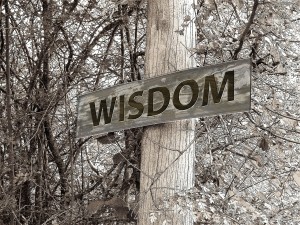
The Downside of Plan B
The Plan B Detour
seen it coming — what with all the job changes and all. But in the end, it doesn’t matter. What matters is that my life isn’t quite going in the direction I had intended.
was younger, I’d wanted to be a writer. My parents suggested maybe I should have a back-up plan — a plan B if you will. “Being a writer is a hard way to make a living,” they said. “You can always get a job and do your writing on the side.” And they were right. To a certain degree.
where you water it. If I put all the time and energy into being an awesome librarian, I have that much less time and energy to put into being an awesome writer.
Un-Crashed — Welcome Back
Yay! It is wonderful to be back up and running.
If you have visited this site at any point between July and now, I apologize for the inconvenience. When it comes to technology and WordPress, I am on a strict Need To Know basis–which means that when my website crashed in July, I didn’t know how to fix it. (in fact, I have a strong suspicion I made it worse).
Anyway, what with Camp NaNoWriMo and rewriting, vacations, a family illness and death, and then school starting again, it wasn’t until NOW that I’ve had time to get the technology glitches unglitched. Not that I did the unglitching. I 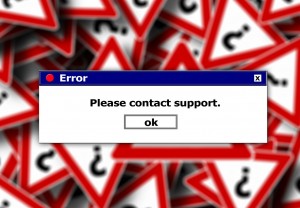 have to thank my wonderful techie co-worker Nate Mihalek for his expertise. So, thank you, Nate. You rock.
have to thank my wonderful techie co-worker Nate Mihalek for his expertise. So, thank you, Nate. You rock.
WELCOME Back and for those of you who are new to this site–welcome. Hopefully you will stick around to join me in my wandering through various worlds, both real and imaginary. I don’t claim age has brought me wisdom, but it has brought a certain freedom, an unself-conciousness if you will, that enables me to share my creative journey. In fact, the older I get, the more I realize that even though creativity and the creative process varies from person to person, there
are similarities–and we can learn and grow from each other. And no matter how difficult it can sometimes seem to find time for those creative endeavors — I firmly believe those are the very things that make life worth living.
So please, feel free to join me as I seek to live the creative life (despite the tyranny of the NOW) and don’t be afraid to comment (agree or disagree). I love to hear what world-walkings others are doing. What works. What doesn’t. Your struggles and successes. Maybe together we can discover the keys to unlock a creative life.
Never underestimate the power of the flock
Even though I love to write, often I need motivation to weigh the scale in favor of writing–and less in favor of other things like sleeping, eating, and well, everything else. Having someone willing to read my manuscript helps, but with no exact deadline, I still find myself putting writing too far down on the priority list. That’s why I signed up for Camp NaNoWriMo.
I’d heard of National Novel Writing Month a long time ago. But for me to attempt to write a novel in November–wasn’t going to happen. But this past June, one of my writing friends told me about Camp NaNoWriMo in July. Seemed like perfect timing to give me that extra little bit of inspiration.
I started off fairly productive. Every day I’d log on and see how I was doing compared to the others. Where was I in the flock of writers? Ahead? Behind? One of the middlers?
I had a good 9,000 words in when I left for vacation. And everything stopped. I had brought wrist bands thinking I’d write in the car–and I drove most of the way. (wristbands don’t help one drive and write, too bad.) When we reached Colorado,
there were always cool things to do, like white water rafting, caving, and shopping in Manitou Springs. Oh, I looked at the writing now and then–but it seemed like work and I was, after all, on vacation. Without internet access, I didn’t have to face my cabinmates and their ever increasing word count. I didn’t have to see their encouragement, or face their ‘why aren’t you writing’ questions. So I didn’t write.
But now, now I’m back home and everyone in my cabin has more words than me. When you’re coming from behind, you have to swim hard and fast. I vow to write long and often. All I have to do is… start. Quit quitting. Begin. Turn on the computer, pull up my document, and start typing words on the page. I can do it.
And so can you. Join a writing group. Be a part of NaNoWriMo. Take a writing class. All of these are ways for you to harness the power of others. Go for it.

